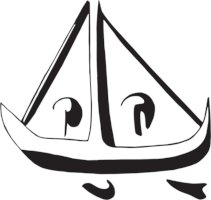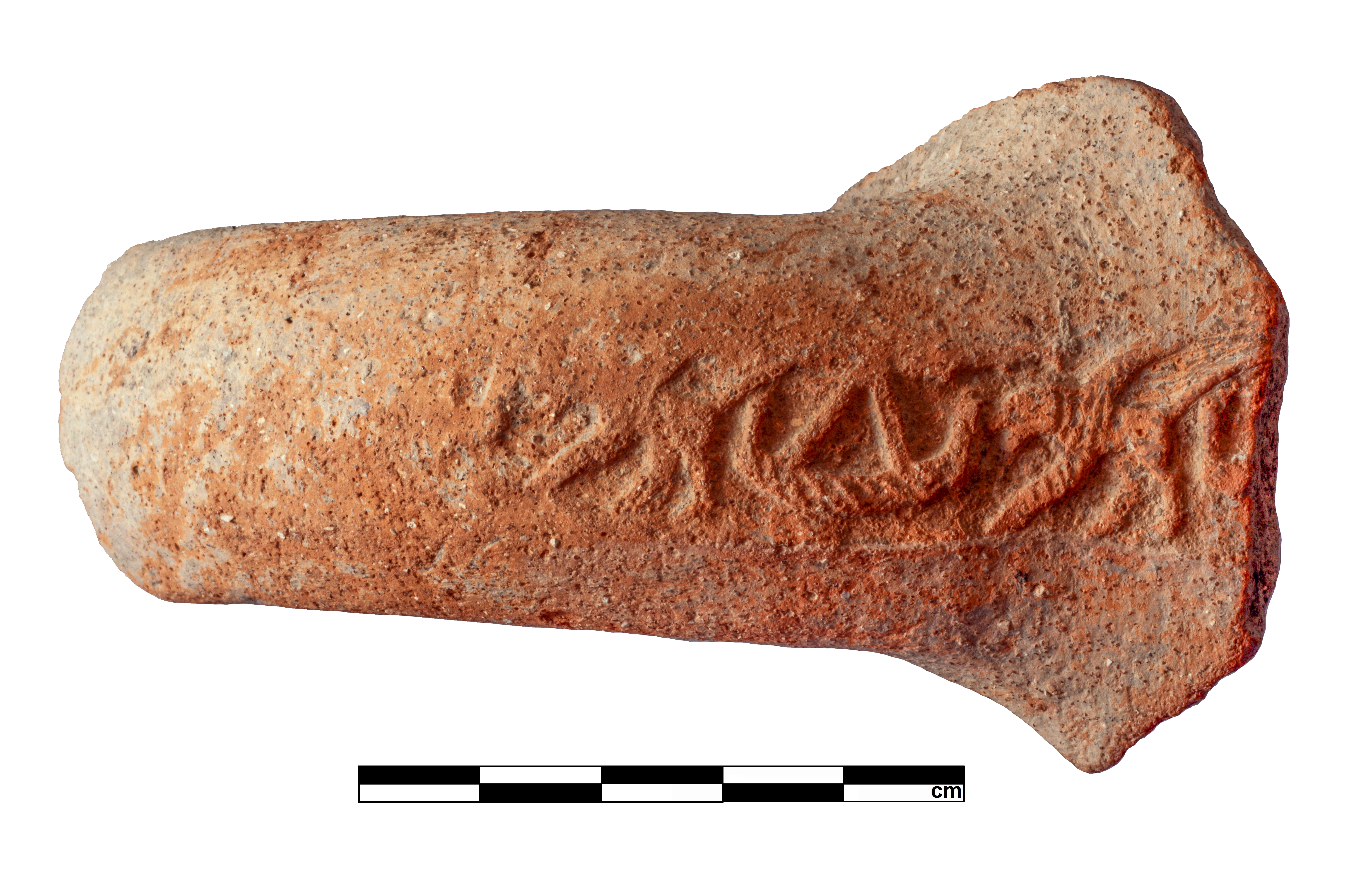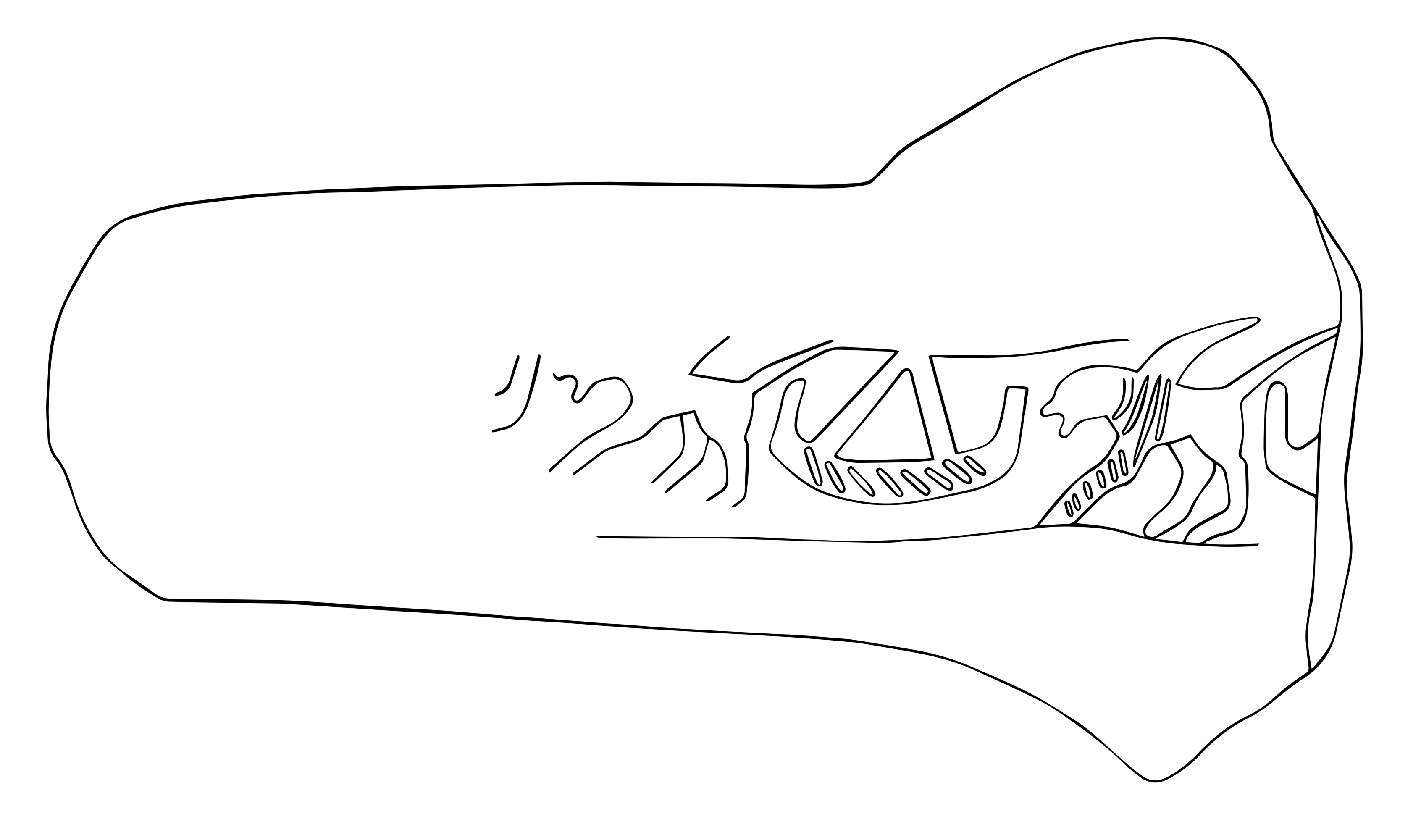Crescentic, near symmetrical hull with high vertical posts. The left post (possible stem) rises vertically, with a slight concave hollow of its outer edge and ending in a somewhat rounded edge. The right post rises vertically and ends in a flat undecorated top. Two stays are shown, while the mast is omitted. The ship itself does not provide clues to determine the vessel's direction with certainty, but the orientation of the leonine dragon suggests that it probably faces left.
Merchant ship sealing
L54
1800-1750 BC
Sidon, College site
ship: L: 2 cm; H: 1.2 cm
Rolled cylinder seal impression on a jar handle
SME/1089/1169
Doumet-Serhal 2015: 14-16, fig. 33; Manolova and Bretschneider 2019: 122, 140, figs. 4, 5.2
Found in a pit (1.45 m long north-south, 1.20 m wide and 60-70 cm deep) probably used for feasting activities near graves. The pit's sandy fill was organic in nature and appeared to have been affected by some water action, resembling a 'cesspit' type of coloration. The seal was carved using linear hatching and belongs to the ribbed style of Syrian seal impressions (Doumet-Serhal 2015: 14). The technique of rolling the seal rather than stamping is uncommon. The seal impression shows a ship and a leonine dragon with its head bowed and an open mouth. The creature has been identified as Ušumgal, an attendant of the Storm-God Adad and a personification of lightning that takes the form of a half lion half eagle beast whose origins are traced back to the third millennium (Collon 2006: 101-102). As the Mesopotamian storm god and lord of the natural elements, Adad (Canaanite Hadad; Phoenician Baal) had special maritime, celestial and meteorological characteristics and was thus important in maritime religion and the well-being of sailors. Cuneiform texts suggest that the storm god was the chief patron deity of Sidon during the Late Bronze Age (Xella 2007: 50).
This is arguably the earliest extant representation of a mnš ship alongside its close contemporary parallel from Tell Dab’a (L55). The Tell Dab’a seal similarly shows a ship next to a weather god.
Doumet-Serhal, C. 2015. “Seal Impressions and Cylinder Seals from the Sidon 2013-2014 Season of Excavation,” AHL 42/43: 2-21.
Manolova, T. and J. Bretschneider. 2019. “An Unprecedented Depiction of a Syro-Canaanite Oared Galley on a Jar Sealing from Tell Tweini,” in J. Bretschneider J. and G. Jans (eds.), About Tell Tweini (Syria). Artefacts, Ecofacts and Landscape. Research Results of the Belgian Mission. Orientalia Lovaniensia Analecta 281. Peeters, pp. 117-148.







